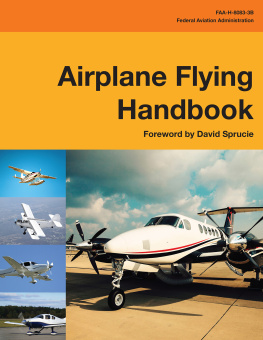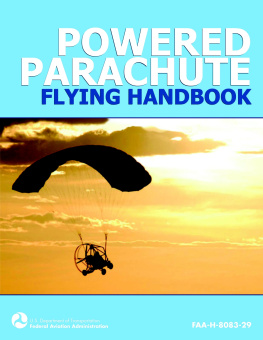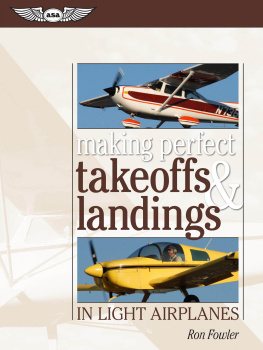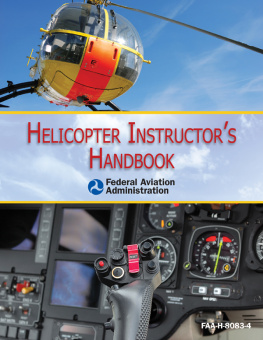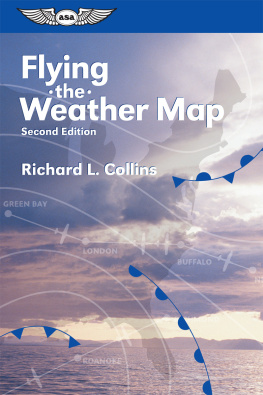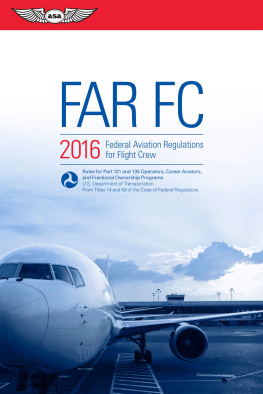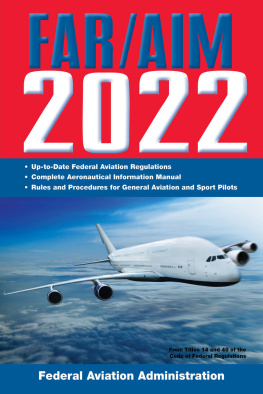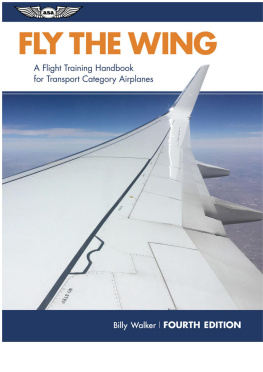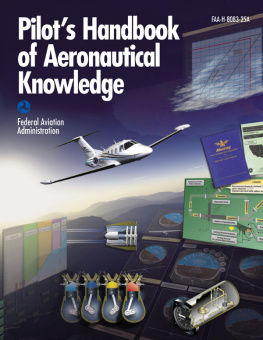First published in 2016
First Skyhorse Publishing edition 2017
Foreword 2014 by David Soucie
All rights to any and all materials in copyright owned by the publisher are strictly reserved by the publisher. All inquiries should be addressed to Skyhorse Publishing, 307 West 36th Street, 11th Floor, New York, NY 10018.
Skyhorse Publishing books may be purchased in bulk at special discounts for sales promotion, corporate gifts, fund-raising, or educational purposes. Special editions can also be created to specifications. For details, contact the Special Sales Department, Skyhorse Publishing, 307 West 36th Street, 11th Floor, New York, NY 10018 or .
Skyhorse and Skyhorse Publishing are registered trademarks of Skyhorse Publishing, Inc., a Delaware corporation.
Visit our website at www.skyhorsepublishing.com.
10 9 8 7 6 5 4 3 2 1
Library of Congress Cataloging-in-Publication Data is available on file.
Cover design by Federal Aviation Administration
Print ISBN: 978-1-5107-1283-6
Ebook ISBN: 978-1-5107-1284-3
Printed in China
The Art Of Flying
Freedom from the bounds of gravity, reserved for the Gods in eras past, has somehow evaded the fate of other wondrous artful discoveries that eventually became commonplace. Photography, railways, telephones, automobiles, television, Internet, and countless other modern discoveries born or art and invention seem to have fallen victim to the ordinary. Ancient history also provides lessons of art relegated to science.
Greek artists had visions of glorious structures to honor and shelter the gods. Magnificent coliseums, housing hundreds of thousands of people, were built to provide a view of gladiators ruling over man and beast. These structures, while beautiful to behold, ultimately failed, structurally crumbling under their own weight and taking hundreds of lives with them. Mourning citizens demanded that Caesar take action to assure their safety. This compelled the advancement of scientific design, architecture, and government regulation. Workers with only rote skills replaced the sculptors talent. Repetitive and routine designs replaced creative invention. Today, architecture and structural engineering has come into balance with art and beauty. Magnificent, modern architectural achievement around the world, safely sheltering hundreds of thousands, stand in beautiful testament to the balance of art, function, and safety.
Flight was also born of visionaries. They conceived of glorious flying machines suspended by lighter-than-air balloons that would someday grace the skies, transporting passengers over impassable land routes to new and exciting places.
These early visionaries gave way to inventors with grand ideas of leaving the earth behind in heavier-than-air flying machines. From within the depths of da Vincis artistic mind, innovation, and creativity, these visions materialized. He discovered the principle of flight was balance. Lift must balance with weight, thrust must balance with drag. His works of art then evolved into practical and viable transportation. Like the marvelous ancient structures, flying machines also crumbled under their own weight, claiming the lives of those inside. Before commercial air travel was viable, citizens demanded the government take action to assure their safety. This compelled the advancement of aeronautical design and systems engineering. Similar to the evolution of architecture, aeronautics and engineering have come into balance with innovation and creativity. Magnificen flying machines with incredible complexity gracefully fly over our heads, carrying hundreds of people, proudly displaying their balance of beauty, function, and safety. With every balance, however, there is a new imbalance.
As modern technology encroaches on the controls in the cockpit, the art and intrigue of flying persists. Flying has not yet relegated itself to rote repetitive skills as have other arts. Technology is exceeding its role of making flight safer and creating a new imbalance. Will flying continue to transcend the commonplace or will technology push it into routine?
Perhaps the wonder and fascination of technology and automated flight started to crumble under its own weight? Hundreds of people have recently lost their lives as technology was allowed to take the controls. Will citizens call upon government regulation to be more restrictive, to take action to protect the passengers, crew, and their families from more technological failures? Or is it in the hands and minds of the flyersartists of aviation to find balance
I am hopeful the art of flying will find the perfect balance with technology and automated flight. Only time will tell. Only the minds of flyers whose artful hands are on the controls will be able to find this balancethe hands of flyers like you, who find beauty and art in being free from the bounds of earth. Flyers who wont succumb to the lure of technology, automation, and rote skills that would otherwise commandeer the art of flight
The joy of piercing clouds, soaring over majestic mountains and vast oceans like gods, can never be replaced with technology. Flying will continue to defy its presumed destiny of becoming routine. It will attain yet another natural balance: a perfect balance of technology and art, function, and safety.
David Soucie
Preface
The Airplane Flying Handbook provides basic knowledge that is essential for pilots. This handbook introduces basic pilot skills and knowledge that are essential for piloting airplanes. It provides information on transition to other airplanes and the operation of various airplane systems. It is developed by the Flight Standards Service, Airman Testing Standards Branch, in cooperation with various aviation educators and industry. This handbook is developed to assist student pilots learning to fly airplanes. It is also beneficial to pilots who wish to improve their flying proficiency and aeronautical knowledge, those pilots preparing for additional certificates or ratings, and flight instructors engaged in the instruction of both student and certificated pilots. It introduces the future pilot to the realm of flight and provides information and guidance in the performance of procedures and maneuvers required for pilot certification. Topics such as navigation and communication, meteorology, use of flight information publications, regulations, and aeronautical decision making are available in other Federal Aviation Administration (FAA) publications.
Occasionally the word must or similar language is used where the desired action is deemed critical. The use of such language is not intended to add to, interpret, or relieve a duty imposed by Title 14 of the Code of Federal Regulations (14 CFR).
It is essential for persons using this handbook to become familiar with and apply the pertinent parts of 14 CFR and the Aeronautical Information Manual (AIM). The AIM is available online at www.faa.gov. The current Flight Standards Service airman training and testing material and learning statements for all airman certificates and ratings can be obtained from www.faa.gov.
This handbook supersedes FAA-H-8083-3A, Airplane Flying Handbook, dated 2004.
This handbook is available for download, in PDF format, from www.faa.gov.
This handbook is published by the United States Department of Transportation, Federal Aviation Administration, Airman Testing Standards Branch, AFS-630, P.O. Box 25082, Oklahoma City, OK 73125.
Comments regarding this publication should be sent, in email form, to the following address:


